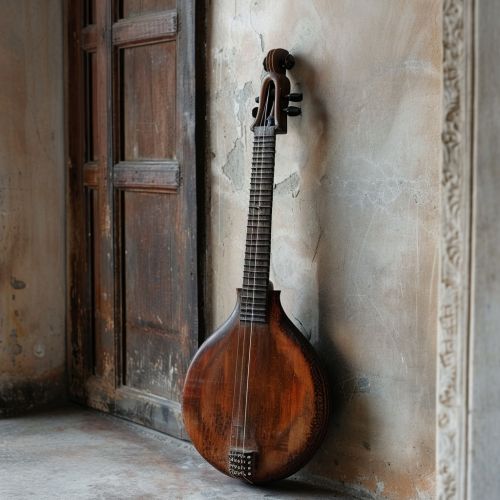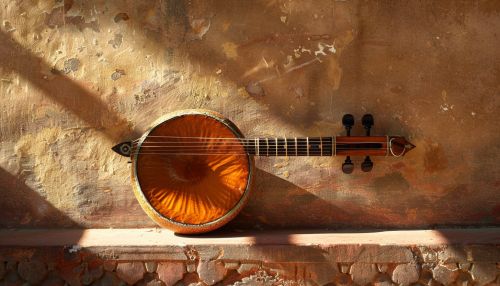Tanpura
Introduction
The Tanpura is a long-necked plucked string instrument, originating from India, that is used in various forms of Indian classical music. It does not play melody but provides a continuous harmonic drone, a practice known as drone in western music. The tanpura is not played in rhythm with the soloist or percussionist: as the precise timing of plucking a cycle of four strings in a continuous loop is a determinant factor in the resultant sound, it is played unchangingly during the complete performance. The combined sound of all strings, each string a fundamental tone with its own harmonic overtones, supports and blends with the external tones sung or played by the soloist.


Construction and Design
The tanpura is a string instrument that can measure from three to six feet in length. The body shape of the tanpura somewhat resembles that of the sitar, but it has no frets – as the strings are always plucked at their full lengths. One or more tanpuras may be used to accompany a soloist. It has a resonator (made from a gourd) and a hollow neck, both made of wood. The neck is straight and hollow, with a flat top. The resonator is large and round, similar to a gourd. The strings are metal; there can be four or five strings. The first string (from the left when one faces the instrument), called the "male" string, is of steel and is tuned to the ground note (the tonic, or "sa") of the raga. The next three strings are the "female" strings, and are made of brass or bronze. These are tuned to the tonic, the lower octave of the fifth, and the lower octave of the tonic, respectively.
Playing Technique
The tanpura is played with the fingers of the right hand, plucking one string at a time in a regular and continuous manner. The player does not change the strings or the notes during the performance. The player sits on the floor, with the tanpura resting against the right thigh. The player plucks each string in a regular cycle, with the fourth string plucked at significant points in the music. The continuous plucking creates a harmonic resonance on the basic notes.
Role in Indian Classical Music
In Indian classical music, the tanpura holds a primary importance as it helps to create the framework on which the raga is laid. It is the harmonic reference point that supports all the melodic structures. The tanpura is not used for rhythm, melody, or any kind of ornamentation, but for creating the sonic canvas on which the melody of the raga is drawn. The tanpura is the lifeblood of any Indian classical music concert. It is an indispensable part of the concert, and without it, the concert is considered incomplete.
Variations
There are several variations of the tanpura. These include the Miraj style, the Tanjore style, the Tamburi, and the Surbahar. The Miraj style is the most common style of tanpura used in North India, while the Tanjore style is more common in South India. The Tamburi is a smaller version of the tanpura and is often used for accompanying instrumental soloists. The Surbahar is a bass version of the tanpura and is used in instrumental music.
